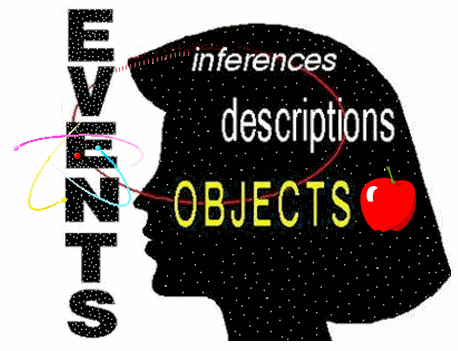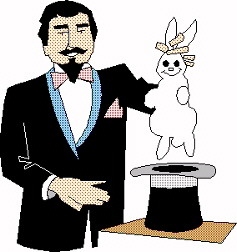
It's a Girl!
Written 1996 by Steven LewisLast October my neighbors booted their store-bought bunny into the street, and we sort of adopted each other. She hung around my backyard, stretchin' and a yawnin', munching on the grass, and I kept her in water and carrots. (Although Bunny Wabbit now prefers apples.) Bunny seemed quite docile, so I presumed she was a female. Today for the first time I picked her up. She wiggled and pawed for a few moments, but finally snuggled in my arms. Soon I discovered to my surprise Bunny was not a female after all. She was Mr. Wabbit.

A couple weeks ago my neighbors across the street had another child. After 3 boys they had a girl. They put a big sign in their front window: "It's a Girl!!!"
Having been so labelled, the girl baby will be treated different from a boy baby. She will be given different toys to play with, her room may be painted pink instead of blue, she will not get to sleep with her brothers when she gets older, and she will have different types of clothes to wear. Employers won't discriminate against her if she grows her hair long. At the pool she will be expected to cover her nipples.

Clearly there are important biological differences between boys and girls. These differences are reflected in our differential labelling. However, many of the differences between individual boys and girls are induced by our different expectations and behaviors toward boys and girls. Many confuse these culturally-induced differences with the biological differences, and try to place artificial limits on members of each sex. Girls are encouraged to become nurses and hygienists, boys become fighter pilots and engineers. Boys are expected to be sexually dominant, girls are expected to take care of the gifts on special occasions. The effects of these stereotypes will be to limit the development of individuals.
For those people who do not differentiate between the biological and the cultural, the labels "girl" and "boy" will be more restrictive than necessary. This is part of what Korzybski labelled "confusion of the orders of abstraction." We treat as one what in fact are two (cultural, biological). The problem is not that we labelled Bunny or Baby "boy" or "girl." The problem lies in our doing so without being conscious of abstracting.
Go to General Semantics Home Page ||| Go to Steven Lewis Home Page